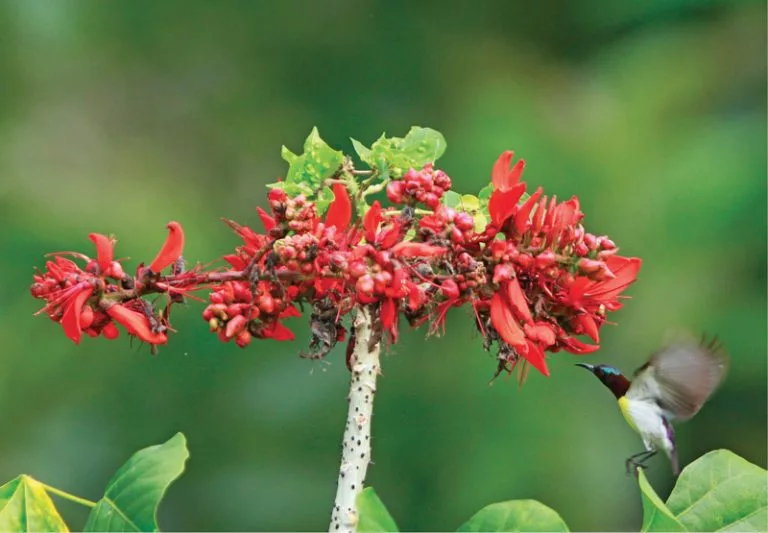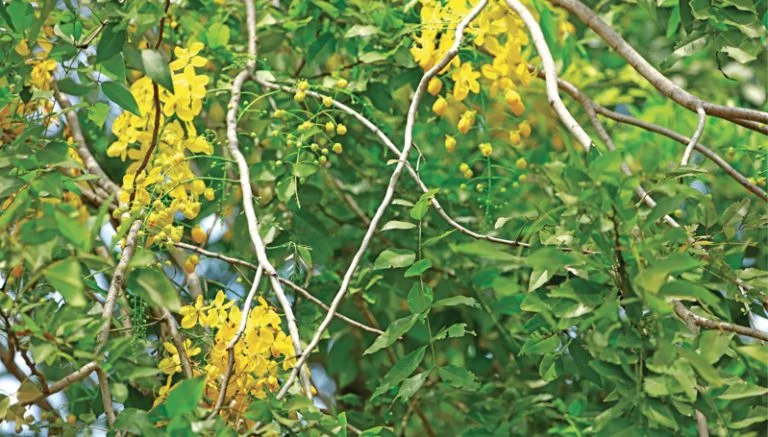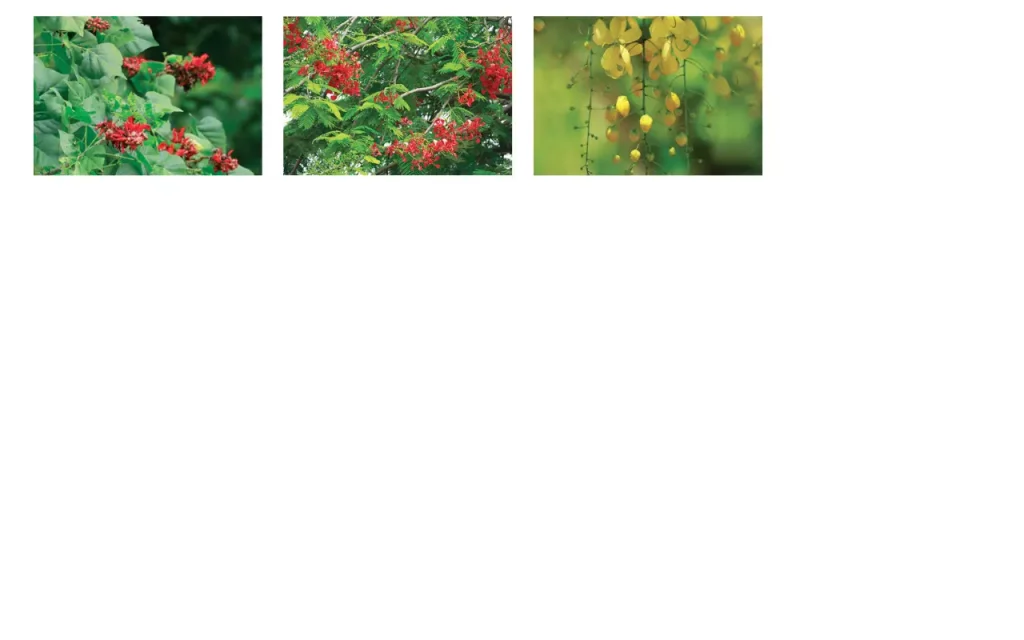
Flowers in the bright red and yellow hues of April burst with colour signifying that Avurudu is fast approaching!
Words Nethu Wickramasinghe | Photography L. J. Mendis Wickramasinghe

Just about the time of the year of the vernal equinox, signifies the beginning of spring (where the great sun is believed to align with the earth) everyone in Sri Lanka is in preparation for rejuvenation. This is the time of the year that one of the most culturally significant festivities take place. Since the ancient times nature has bonded immensely to provide meaning to the Sinhala and Tamil New Year. This is also the breeding season of the iconic Koha (Coucal), who persists on not taking a moments respite with their loud vocalisation in order to captivate a suitable partner. The Koha’s call is depicted as the official proclamation of the New Year.
In the countryside yellow blooms of Ehela, the red hues of Mai, and the Erabadu blooms add such vivacity, bestowing a warmth to this season. Yet, what could be more aesthetically appealing than the vibrantly shaded dainty, fragrant flowers? Sri Lanka being quite close to the equator, there is an abundance of sunlight all year round; and therefore to signal the changes of the seasons, nature has found unique ways of symbolising these occasions.
Ehela, or the Golden-Rain Tree comes to life at this time of the year, and when it does it certainly rains in gold. These yellow coloured blooms sprinkle down as drop clusters from every inch of the lovely plant. Being deciduous what is even more striking is that the whole of the Ehela plant appears as one heap of golden petals. These attract many pollinators, from the honey bee, butterflies and wasps to a thriving variety of bugs, that are lured by the scent and colour of the flowers, in exchange for the nectar they receive.
There is an abundance of sunlight all year round; and therefore to signal the changes of the seasons, nature has found unique ways of symbolising these occasions.
The Indian Coral Plant which is locally known as ‘Erabadu/Eramudu’, although not an indigenous plant has significant properties when it comes to its medicinal value. As for the blooms that spread in a vibrant red hue, the plants too appear sparkling crimson on every branch during the season. Most above all, many birds find its sweet nectar quite appealing, for wherever there is a blooming Erabadu tree one is then sure to find flocks of birds feasting on its nectar. The roots, leaves, bark, fruits, and even the seeds are said to have medicinal values, owing to the large amount of active ingredients that are found in this plant, Sri Lankans have long used them in their meals due to this very reason. Identification of the correct variety can be tricky amidst many other similar exotic cultiva-tion that are available in the market. However the Indian coral plant is a thorny species.

Another flower that decorates the season is what the Sri Lankans commonly call the Mai flower, this however is a plant that is native to Madagascar and known as Poinciana blooms, which is one of the several varieties of Flame trees (Flame of the forest). As the name rightly suggests, when in bloom all the wide spread branches fill completely with a burnt orange tinge, which certainly seems to set the tree on fire. These exquisite flowers resemble orchids in appear-ance, and one of the five petals is but different with a much lighter tinge. Due to the overall plant structure that provides a sense of serene harmony, this is grown by many as a bonsai plant.
Furthermore, as the trees mature the plant develops broad umbrella shaped crowns and is hence used for its shade giving properties, and planted along roads specially in the tropics as well as in Sri Lanka. One can enjoy the splendour of the shade these gigantic shady plants provide along the Negombo –Colombo road, and even along the Kandy – Colombo road.
Interestingly enough all these trees when in bloom have not a single leaf left, but only the magnificent flowers. Much of these plants are abundant in the drier parts of the country, where it needs little rain. Having come to be admired by many for their beauty alone, these blooms have been used to border the streets providing mere companionship for passers-by. Those that line the streets of the ancient cities certainly speak of a language where words fall short, for these flowers that blooms during this season have sent roots deep into our hearts and minds, and will remain the same for many more centuries ahead!



